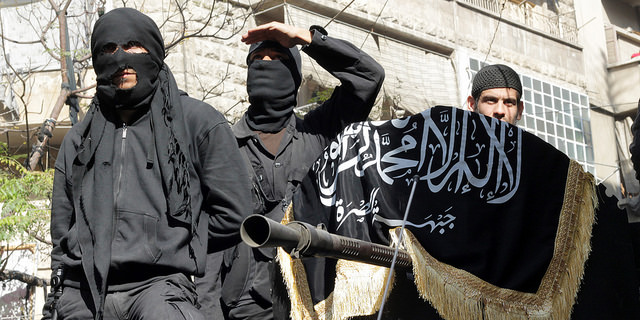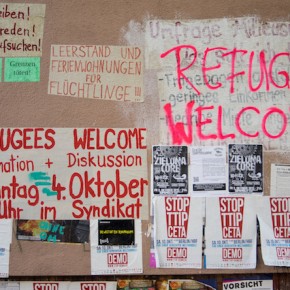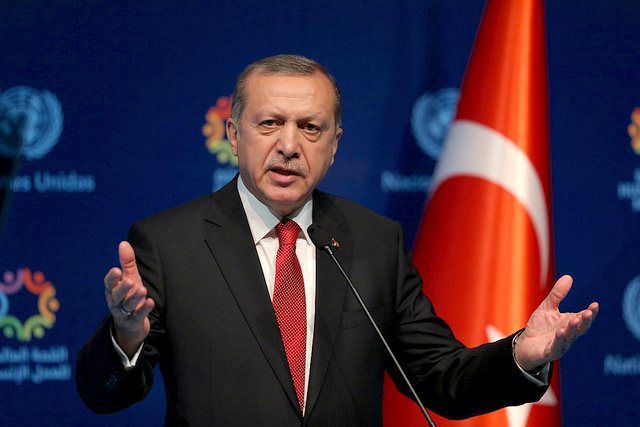A major criticism of Islamic militants is the fact that they fight during Ramadan. S. K. Malik’s Qu’ranic Concept of War complicates this argument by highlighting a strong Qu’ranic justification for jihad during the “prohibited month.”
Malik’s position stands in stark contrast to the opinions of numerous journalists, scholars, and religious leaders. Their arguments have been most recently applied to Islamic State. For instance, Bobby Ghosh writes in Quartz that Islamic State’s call for a Ramadan surge is “un-Islamic,” though it is “highly effective.” Dr. Caner K. Dagli goes further in The Atlantic, writing that Islamic State is facilitating a “perversion of the Muslim holy month.” The problem is that these articles ignore that the Qu’ran can be interpreted to actively encourage jihad during Ramadan, which Malik highlights through a reading of Surat al-Baqarah.
Surat al-Baqarah is the second (and longest) Surah of the Qu’ran, which among other things, outlines the fasting requirements of Ramadan. Ghosh’s and Dagli’s analysis is largely based on a reading of verse 194, which has been deeply influential on religious praxis:
The prohibited month for the prohibited month, and so for all things prohibited, there is the law of equality. If then any one transgresses the prohibition against you, transgress likewise against him. But fear Allah, and know that Allah is with those who restrain themselves.
The natural question is whether or not religious violence is actually prohibited. It seems clear that out of a zeal to chastise factions like the Taliban, Boko Haram, and Islamic State, writers like Ghosh and Dagli have ignored that their behaviour in this regard often cannot be easily attacked with Qu’ranic doctrine.
For instance, based solely on verse 194, one could easily argue that the prohibitions on fighting during Ramadan can be ignored based on the behaviour of oppositional factions. After all, the verse does say “if then any one transgresses the prohibition against you, transgress likewise against him,” arguably excusing violence when it is defensive or retaliatory. This characterization applies to numerous religious insurgencies currently occurring in Muslim-majority countries. Furthermore, since the Rashidun Caliphate, Muslim leaders have been arguing that the verse doesn’t apply to ongoing wars, pointing to the fact that the Prophet Muhammad continued to plan and execute important battles (as part of a prolonged military campaign against the Meccans) during Ramadan.
Malik focuses on a later passage in the Surah, using it to emphasize two essential points about participating in modern war during Ramadan. One is broadly that jihad can only be waged in cases when the “path of Allah” is obstructed, which is particularly true during Ramadan. The other is that this obstruction is linked to conditions of “tumult and oppression” that Muslims are obliged to combat, including through religiously-sanctioned total war. He spots both themes in verse 217:
They ask thee concerning fighting in the Prohibited Month. Say: “Fighting therein is a grave (offence); but graver is it in the sight of Allah to prevent access to the path of Allah, to deny Him, to prevent access to the Sacred Mosque, and drive out its members.” Tumult and oppression are worse than slaughter. Nor will they cease fighting you until they turn you back from your faith if they can. And if any of you Turn back from their faith and die in unbelief, their works will bear no fruit in this life and in the Hereafter; they will be companions of the Fire and will abide therein.
This raises a couple of important questions, bearing in mind that Malik was a Pakistani Brigadier General who wrote this book in 1979. First is what “to prevent access to the path of Allah” actually means for Malik and his contemporaries, including General Zia ul-Haq, in the context of Pakistani society at the time. Second is the exact definition of “tumult and oppression,” and which authorities determine it.
As we learned in Part One, Malik’s book was received with acclaim in Pakistan because it articulated the anxieties of reactionary classes that were troubled by the trajectory of historical events, which seemed to indicate that leftist factions would make a serious grab for power in the country.
Malik does not deny that Surat al-Baqara is referring specifically to the fact that the Meccans were denying “access to the Sacred Mosque,” obstructing the early Muslims from performing their religious duties. However, he is clearly referring to the verse because of an earnest belief that leftist Pakistani undercurrents threatened to disrupt social harmony by taking power away from an increasingly religious national elite. We can once again see the influence of thinkers like Abul Ala’a Maududi, who linked social dysfunctions to an inability of Indian Muslims to practice their fundamentalist interpretations of Islamic doctrine.
One of the reasons that General Zia ul-Haq adored Malik’s insights is because they articulated his belief that leftist anti-capitalism threatened to unravel Pakistan’s Islamic character, by encouraging discord, and fermenting rebellion against feudal landlords, mullahs, and the military. Leftists were confusing people and bringing them away from the “path of Allah,” defying His will for an Islamic fundamentalist social harmony. This is what justified total war against them, in Zia’s view, and the implementation of a religiously-tinged program of counterinsurgency.
Of course, the problem with pursuing this argument is that it only works if “tumult and oppression” continues to be objectively determined by existing elites, rather than subjectively determined by rebellious insurrectionists. Malik’s contemporaries certainly believed that leftist pushes constituted “tumult and oppression,” an impression which they reinforced in the national consciousness with assistance from allied landlords, factory owners, media barons, bureaucrats, religious scholars, military strongmen, and even civilian leaders like Benazir Bhutto. However, in unleashing that justification, they inadvertently created a situation where it could be used to religiously frame an insurgency against many of the same elites who initially backed it.
This is how we must understand the evolution of groups like the Pakistani Taliban, which emerged shortly after democratic experiments under the NATO-ISAF occupation of Afghanistan began to falter in the mid-2000s. The Pakistani Taliban maintains a belief that society must be restored to “the path of Allah,” which it ethically defines based on the establishment of a fundamentalist Muslim body politic, however it expands the responsible actors for wider “tumult and oppression” to include Pakistani institutions themselves. This religious evaluation is subjectively determined by the militants themselves, and is a direct reaction to the War on Terror.
As a result, their Ramadan attacks are religiously consistent, based on the fact that Pakistani institutions’ are now believed to be “preventing access to the path of Allah.” This seems to be equally true for the Afghan Taliban, Boko Haram, and Islamic State, with different actors that are the agents of this social disruption. As we will continue to observe in our reading of this text, these discursive moves seem to indicate that as political subjects, militants like the Pakistani Taliban have begun to seize these interpretations of jihad for their own uses, pursuing alternative projects that target Malik’s institutional descendants.
Photograph courtesy of coolloud. Published under a Creative Commons License.





